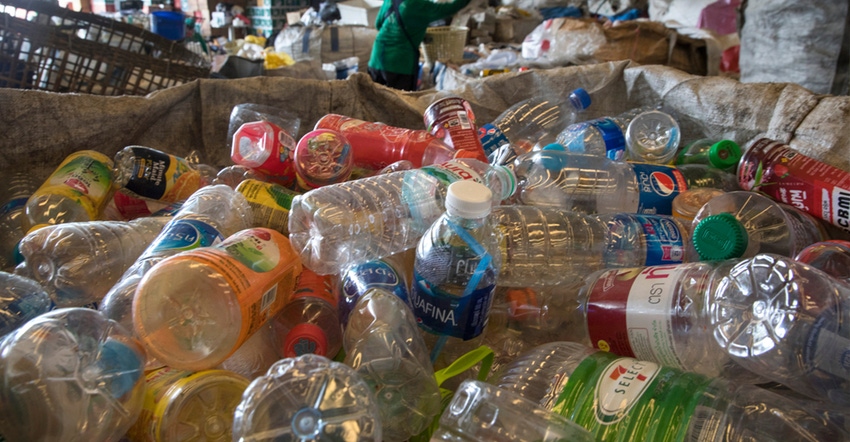Advanced recycling is growing in popularity across the world. Some people are excited about its potential to close the gaps in our current recycling system, but it must be implemented strategically.

In order to properly utilize chemical recycling, also known as pyrolysis or advanced recycling, 85 percent of the material must be polyethylene (PE) and polypropylene (PP) according to a recent study done by Eunomia Research & Consulting.
The high concentration of PE and PP needed to properly use chemical recycling puts pressure on sorting facilities and makes this method for recycling seem unfeasible or more of a hassle than it is worth investing in.
The Alliance to End Plastic Waste has a different opinion.
Alliance to End Plastic Waste, or Alliance, is a non-profit organization based in Singapore comprised of companies working towards a common goal to reduce plastic waste by supporting recycling systems.
The organization was founded in 2019 by several companies including BASF, Chevron Phillips Chemical, ExxonMobil, Dow Chemical, Mitsubishi Chemical Holdings, Proctor & Gamble, and Shell.
On behalf of Alliance, Eunomia Research & Consulting conducted a study about the requirements for feedstock that are necessary for pyrolysis.
The study, titled “Feedstock Quality Guidelines for Pyrolysis of Plastic Waste,” interviewed 32 organizations or companies from across the plastic waste value chain in Asia, North America, and Europe to gather information on how proper pyrolysis recycling can be implemented to optimize the recycling stream and establish more alignment across the plastics industry.
“This study aims to serve as a starting point for an inclusive conversation on the types of systems that need to be developed.”
Before diving into what specific plastic requirements are necessary to employ advanced recycling, the study first explains what this form of reuse even entails.
“Pyrolysis is the process of breaking down plastic waste at high temperatures with minimal oxygen to produce pyrolysis oil, which can be used in the production of new plastics as a replacement for fossil feedstocks,” researchers explained.
In order to achieve the desired results, about 85 percent of the material that enters the equipment must be PE or PP. This will vary depending on the specific facility and its individual equipment and systems, however, 85 percent is the general threshold as defined by the study.
In addition to this, advanced recycling is a rather new field, meaning most facilities capable of performing pyrolysis are still in the process of formalizing the precise process for how plastics must be handled with their specific technology.
“It should also be noted that many pyrolysis operators are in the early stages of refining and optimizing their processes, and their feedstock requirements are likely to evolve over time.”
With this in mind, the research that was conducted reflects the current state of advanced recycling facilities, which the researchers then used to advise improvements to the stream.
“Advantages of pyrolysis include that it is a relatively simple and flexible technology and that it typically targets difficult-to-recycle and highly heterogenous plastic waste, such as mixed polyolefin plastic waste or multi-material packaging.”
While it is relatively simple, contamination levels are still an important factor to focus on in order to ensure effective chemical recycling.
Nine different feedstock specifications were indicated and laid out for pyrolysis.
Assorted average contamination allowances were provided as follows: the PVC/PVDC limit is 1 percent, the PET/EVOH/Nylon limit is 5 percent, the Polystyrene limit is 7 percent, the Metal/Glass/Dirt/Fines limit is 7 percent, and the paper/organics limit is 10 percent.
Other indicated guidelines include moisture levels and the size of plastic pieces that can be processed.
These are all requirements that should be taken seriously.
In order to truly benefit from the use of advanced recycling, researchers noted that it must fit within the already established system set by mechanical recycling.
“It is important to understand how the introduction of a feedstock specification for advanced recyclers may interact with the existing system,” they wrote.
Pyrolysis allows for the recycling of “hard-to-recycle” materials, meaning it can typically recycle plastics containing different grades, colors, odors, and other varying additives that mechanical recycling systems can not handle.
This means chemical engineering can be a catch-all recycling method for the variety of plastic products traditional recycling cannot process.
With all of this information determined, the researchers of the study suggested the reformation of collection, sorting, and recycling streams across North America and Europe.
In order to implement chemical recycling in a way that closes all of the gaps in our current recycling systems, it is necessary to understand the overlap between what plastics mechanical recycling cannot handle and what plastics—and in what forms—pyrolysis can.
About the Author(s)
You May Also Like




